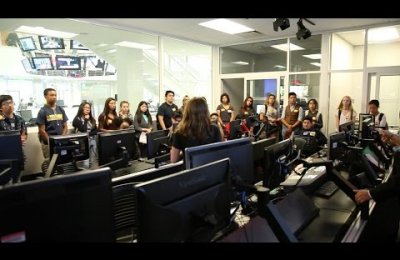** A video of Martin Hilbert explaining the results of his study is available here . **
Think you’re overloaded with information? Not even close.
A study appearing Feb. 10 in Science Express, an electronic journal that provides select Science articles ahead of print, calculates the world’s total technological capacity — how much information humankind is able to store, communicate and compute (full text).
“Compared to nature, we are but humble apprentices. However, while the natural world is mind-boggling in its size, it remains fairly constant. In contrast, the world’s technological information processing capacities are growing at exponential rates,” said lead author and doctoral student Martin Hilbert.
So how much information is there in the world? How much did this grow over two decades?
Prepare for some big numbers:
- In 2007, humankind sent 1.9 zettabytes of information through broadcast technology such as televisions and GPS. That’s equivalent to every person in the world receiving 174 newspapers every day.
- When we’re pestering our friends on two-way technology, such as cell phones or e-mail, the amount we communicate has increased an average of 28 percent every year since 1986, or, five times as fast as the United States’ GDP. Humankind shared 65 exabytes of information in 2007, the equivalent of every person in the world sending out the contents of six newspapers every day.
- Looking at both digital memory and analog devices, humankind can store at least 295 exabytes of information. (That’s a number with 20 zeroes in it.) Put another way, if a single star is a bit of information, that’s a galaxy of information for every person in the world.
- 2002 was the beginning of the digital age, the first year in history that digital storage capacity overtook analog capacity. As of 2007, almost 94 percent of our memory is in digital form.
- In 2007, all the general-purpose computers worldwide computed 6.4 x 10^18 instructions per second. This is in the same general order of magnitude as the number of nerve impulses executed by the human brain in a single second.
Priscila Lopez of the Open University of Catalonia was co-author of the study.





![[web series] Campaign Junkie](https://annenberg.usc.edu/sites/default/files/styles/news_index_featured_small/public/media-youtube/d5gbSRAjFwQ.jpg?itok=YP9_X3fc)


